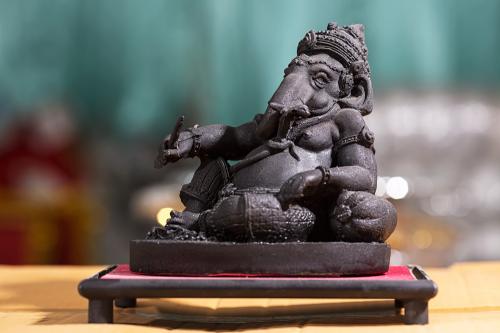Table of Content
In India, we celebrate all festivals with happiness such as Diwali, Holi, Krishna Janmashtami and Ganesh Chaturthi. These festivals are important to us in so many ways. They remind us of our cultural identity and values. The celebrations bind the people of different cultural backgrounds as they celebrate the festivals together with love and harmony. However, as the celebrations are growing in magnitude we are falling short of our resources. The overutilization of natural resources will impact future generations to come.
Ganesh Chaturthi is a festival of Hindus, that celebrates the arrival of Lord Ganesha to Earth with his mother, Goddess Parvati after they are returning from Kailash Parvat. The festival is celebrated at a large scale in homes of Ganesh Bhakts, where they introduce Ganesh clay Idols as a way of welcoming him into their homes. Prayers and fasts are held by the bhakts and prasadam are made and distributed to people.
On the tenth and the last day of the Festival, The Idol is carried by the family members as well as others, along with music and chanting aarti, to a nearby river or water body and immersed the idol in the water. It is believed that the idol gets dissolved in the water and returns back to Mount Kailash to his parents Goddess Parvati and Lord Shiva.
The clay idols of Lord Ganesh are made using a lot of water-polluting chemicals such as Plaster Of Paris. Immersing a large number of idols in the sea or river on the occasion of Ganesh Visarjan has added more pollution to the already depleting water bodies. The toxic wastes, when added to the water bodies, kill the aquatic plant and animal life. Hence, it is important to celebrate an eco-friendly Ganesh Chaturthi and protect our environment.
We all should think about future generations and use our resources in a sustainable way so that we can preserve the limited resources for the coming generation as well. Of Course, we must celebrate our festivals with much joy and fervour, but with a lot of understanding about how our actions can affect the environment around us for the worse.
At some places, serious actions have been taken against immersion of Ganpati Idols in sea waters. For example, the ruling of the Madras High Court in 2004 that the immersion of Ganesha Idols is unlawful as the chemicals used in making these pollute the sea. In another case, Goa's government banned the use of POP (Plaster of Paris) Idols.
There are many places where the government encourages producing traditional clay Ganpati Idols. People have also engaged themselves in taking initiatives to use eco-friendly materials for making Ganesha Idols.
On an individual level, many people have stopped immersing the idols in water bodies and instead adopted immersing the idols in water barrels at their homes. Using natural products such as coconut, paint and natural colors. These days, people are also using artificial immersion tanks instead of using water bodies like river, sea or ponds.
Instead of bringing several idols in each household, the people in a society or area can choose to install one big Ganesha Idol in the main center stage and figure out innovative ways to decorate and celebrate the festival.
As responsible individuals, it is important to realize at what level human activities have been impacting the environment around us.
Every action counts!
Encourage your family, friends, colleagues and neighbors to adopt eco-friendly practices.
Celebrate your festivals blissfully with your loved ones and spread joy and happiness all around. Use environmentally-friendly materials to decorate and celebrate because Eco-Friendly way is the best way!
.webp)





_1735214375.webp)









